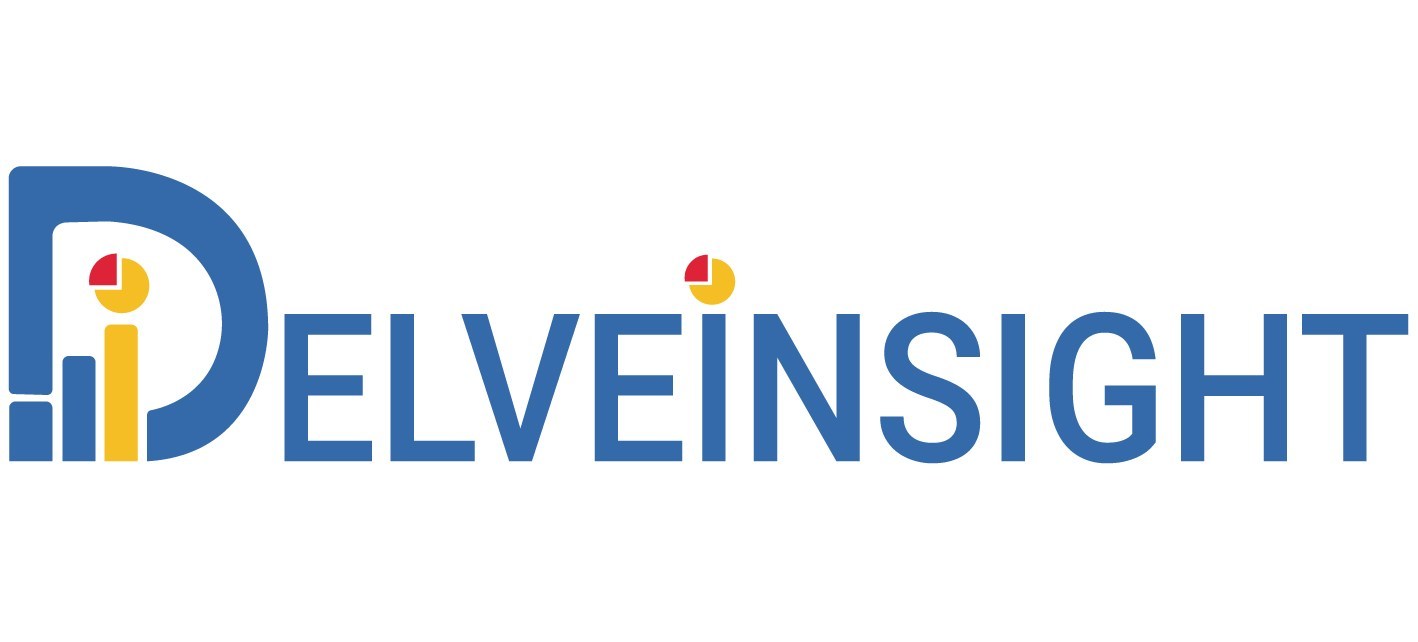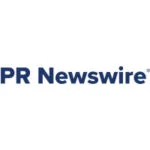HEMLIBRA has strong market potential due to its unique, subcutaneous prophylactic treatment for Hemophilia A, including patients with and without factor VIII inhibitors. With increasing global diagnosis rates and expanding access in emerging markets, HEMLIBRA is poised for continued growth.
LAS VEGAS, April 21, 2025 -- DelveInsight's "HEMLIBRA Market Size, Forecast, and Market Insight Report" highlights the details around HEMLIBRA, a bispecific factor IXa- and factor X-directed antibody indicated for routine prophylaxis to prevent or reduce the frequency of bleeding episodes in adult and pediatric patients ages newborn and older with hemophilia A (congenital factor VIII deficiency) with or without factor VIII inhibitors. The report provides product descriptions, patent details, and competitor products (marketed and emerging therapies) of HEMLIBRA. The report also highlights the historical and forecasted sales from 2020 to 2034 segmented into 7MM [the United States, the EU4 (Germany, France, Italy, and Spain), the United Kingdom, and Japan].
Chugai/Genentech/Roche's HEMLIBRA (emicizumab) Overview
HEMLIBRA is a bispecific antibody that targets both factor IXa and factor X, two key proteins in the body's natural blood clotting process. Bridging these proteins it helps restore clotting function in individuals with hemophilia A. HEMLIBRA is used as a preventive treatment and is administered as a ready-to-use subcutaneous injection. It can be given once a week, every two weeks, or every four weeks—following an initial four-week period of weekly doses. Developed by Chugai Pharmaceutical Co., Ltd., HEMLIBRA is co-developed internationally by Chugai, Roche, and Genentech. In the U.S., Genentech markets the drug under the name HEMLIBRA (emicizumab-kxwh), with "kxwh" assigned per FDA guidance on naming biological products.
HEMLIBRA can be prescribed in various dosage regimens. The initial loading dose is 3 mg/kg administered via subcutaneous injection once weekly for the first four weeks. This is followed by one of the following maintenance dosing options:
- 1.5 mg/kg once every week,
- 3 mg/kg once every two weeks, or
- 6 mg/kg once every four weeks
The choice of maintenance dose should be guided by the healthcare provider's judgment, taking into account the potential for improved patient adherence with certain regimens. The prophylactic use of bypassing agents should be stopped the day before initiating HEMLIBRA prophylaxis. Factor VIII (FVIII) prophylaxis may be continued during the first week of HEMLIBRA treatment.
Drug Name | HEMLIBRA (emicizumab) |
Molecule type | Bispecific antibody |
Developer | Chugai/Genentech/Roche |
Primary Indication | Hemophilia A with Inhibitors, Hemophilia A |
Mechanism of action | Factor IXa stimulants; Factor X stimulants |
Route of administration | Subcutaneous |
Learn more about HEMLIBRA projected market size for hemophilia A @ HEMLIBRA Market Potential
Hemophilia A is marked by bleeding episodes, though in mild and moderate cases, these initial episodes are often less intense, which can lead to delays in diagnosis as patients may not seek medical attention promptly. Moreover, early detection is frequently hindered by the lack of access to adequate diagnostic facilities.
In 2023, the number of treated prevalent Hemophilia A cases across the 7MM was estimated at around 45,000, with projections indicating growth throughout the forecast period, according to DelveInsight. Among hemophilia A patients—whether or not they have inhibitors—those without inhibitors represent a larger portion of the population.
The standard treatment approach focuses on replacing the missing clotting factor, FVIII, to support normal clot formation and minimize or prevent bleeding episodes. Initially, FVIII replacement was sourced from whole blood and plasma, but advances in biotechnology led to the development of recombinant FVIII (rFVIII) therapies, significantly enhancing disease management by offering more precise and efficient options. More recently, innovative therapies using novel mechanisms to prevent bleeding are expanding the treatment arsenal.
Several approved therapies for hemophilia A include ALTUVIIIO (Sanofi/Sobi), ROCTAVIAN (BioMarin), OBIZUR (Takeda), ALHEMO (Novo Nordisk), HEMLIBRA (Chugai/Genentech/Roche), ESPEROCT (Novo Nordisk), JIVI (Bayer), WILATE (Octapharma), and ADYNOVATE (Takeda), among others. Notably, ROCTAVIAN, a gene therapy developed by BioMarin, represents a major advancement—it offers a one-time treatment by introducing functional FVIII genes into the patient's cells, potentially restoring normal clotting ability and reducing the need for regular injections. With a wholesale acquisition cost of USD 2.9 million, BioMarin has already facilitated reimbursement in Europe and administered treatment to a patient in Germany in Q2 2023 at a discounted price of approximately USD 900,000.
Looking ahead, the hemophilia A treatment landscape is expected to evolve significantly from 2024 to 2034, fueled by the introduction of new therapies currently in development. According to DelveInsight, the hemophilia A market across the 7MM is projected to grow from USD 11.1 billion in 2023 at a robust CAGR through 2034. Nonetheless, factors like delayed diagnosis, limited awareness, and high treatment costs may pose barriers to market growth.
Discover more about the hemophilia A market in detail @ Hemophilia A Market Report
Emerging Competitors of HEMLIBRA
Emerging therapies such as SPK-8011 (Roche [Spark Therapeutics]), fitusiran (Sanofi), marstacimab (Pfizer), Mim8 (Novo Nordisk), and others are being developed to provide safe and effective treatment options. Companies like GeneVentiv Therapeutics are also working on advancements like Adeno-associated Virus (AAV)-based universal gene therapy for hemophilia (GENV-HEM [AAV8.Fva]).
Fitusiran is a subcutaneously administered small interfering RNA (siRNA) therapy under development for the prophylactic treatment of hemophilia A and B, regardless of the presence of inhibitors. Its mechanism involves reducing levels of antithrombin—a protein that inhibits clot formation—to enhance thrombin generation, restore hemostatic balance, and prevent bleeding episodes.
In January 2018, Sanofi and Alnylam Pharmaceuticals restructured their RNAi therapeutics collaboration to better align and accelerate the development and commercialization of select treatments for rare genetic diseases. Through this revised agreement, Sanofi obtained global rights to develop and commercialize fitusiran.
Marstacimab (PF-06741086) is a monoclonal IgG1 antibody that targets the Kunitz 2 domain of the Tissue Factor Pathway Inhibitor (TFPI). It is being developed to prevent or reduce bleeding events in patients with severe hemophilia A or B (defined as <1% activity of Factor VIII or IX), whether or not they have inhibitors.
The FDA granted Fast Track Designation to marstacimab in September 2019 for its potential use in patients with inhibitors. In December 2023, Pfizer announced that the FDA had accepted its Biologics License Application (BLA) for marstacimab, supported by data from the Phase III BASIS study involving patients without FVIII or FIX inhibitors.
BBM-H803 is Belief BioMed's first gene therapy candidate for hemophilia A and its second product to gain Investigational New Drug (IND) approval from China's National Medical Products Administration (NMPA). In December 2022, the U.S. FDA granted Orphan Drug Designation to BBM-H803.
To know more about the number of competing drugs in development, visit @ HEMLIBRA Market Positioning Compared to Other Drugs
Key Milestones of HEMLIBRA
- In June 2022, Chugai received approval in Japan for acquired Hemophilia A based on a domestic Phase III AGEHA study.
- In October 2018, HEMLIBRA was approved by the US FDA for routine prophylaxis to prevent or reduce the frequency of bleeding episodes in adults and children, ages newborn and older, with hemophilia A without factor VIII inhibitors (FVIII). However, this therapy, which was co-developed by Genentech, Chugai, and Roche, was already FDA-approved in 2017 for routine prophylaxis to prevent or reduce the frequency of bleeding episodes in adults and children with hemophilia A with FVIII inhibitors
- In April 2018, the US FDA granted breakthrough therapy designation to Genentech's HEMLIBRA for people with hemophilia A without factor VIII inhibitors.
- In October 2014, the US FDA granted orphan drug designation to HEMLIBRA for the treatment of Hemophilia A.
Discover how HEMLIBRA is shaping the hemophilia A treatment landscape @ HEMLIBRA Cost
HEMLIBRA Market Dynamics
HEMLIBRA developed by Roche/Genentech, has significantly reshaped the hemophilia A treatment landscape since its approval. Designed as a bispecific monoclonal antibody, HEMLIBRA mimics the function of factor VIII by bridging activated factor IX and factor X, offering prophylactic treatment for patients with hemophilia A with or without factor VIII inhibitors. Its subcutaneous administration and less frequent dosing schedule (weekly, biweekly, or monthly) offer considerable convenience compared to traditional intravenous factor replacement therapies, making it a preferred option for both patients and caregivers.
The market dynamics for HEMLIBRA have been largely influenced by its clinical efficacy, improved patient compliance, and strong safety profile. Since its launch, it has rapidly gained market share, especially among inhibitor patients where treatment options were limited and complex. In non-inhibitor patients as well, the shift away from frequent IV infusions has led to strong adoption rates, allowing HEMLIBRA to cannibalize traditional recombinant factor VIII therapies. Furthermore, its entry has pressured pricing and market share dynamics across the hemophilia therapeutic space, triggering strategic shifts by legacy players like Takeda, Sanofi, and Bayer.
However, HEMLIBRA's market leadership is being challenged by the evolving competitive landscape. The emergence of gene therapies, which offer the potential for long-term or even curative outcomes, introduces a new dimension to treatment decisions. While some gene therapies are still in early stages of adoption and face challenges related to durability, safety, and patient eligibility, they represent a looming threat to the long-term dominance of HEMLIBRA, particularly in younger, eligible patient populations.
Going forward, the market trajectory for HEMLIBRA will depend on several factors: expanding label indications (such as pediatric use), long-term safety and efficacy data, continued pricing negotiations with payers, and how effectively Roche can defend its position against next-generation therapies. Additionally, with increasing emphasis on patient-centric outcomes and value-based care, HEMLIBRA's ability to demonstrate long-term cost-effectiveness versus both traditional and novel competitors will be key to sustaining its market share.
Dive deeper to get more insight into HEMLIBRA's strengths & weaknesses relative to competitors @ HEMLIBRA Market Drug Report
Table of Contents
1 | Report Introduction |
2 | HEMLIBRA: Chugai/Genentech/Roche |
2.1 | Product Overview |
2.2 | Other Development Activities |
2.3 | Clinical Development |
2.4 | Clinical Trials Information |
2.5 | Safety and Efficacy |
2.6 | Product Profile |
2.7 | Market Assessment |
2.7.1 | The 7MM Analysis |
2.7.1.1 | Cost Assumptions and Rebate |
2.7.1.2 | Pricing Trends |
2.7.1.3 | Analogue Assessment |
2.7.1.4 | Launch Year and Therapy Uptake |
2.7.2 | The United States Market Analysis |
2.7.3 | EU4 and the United Kingdom Market Analysis |
2.7.3.1 | Germany |
2.7.3.2 | France |
2.7.3.3 | Italy |
2.7.3.4 | Spain |
2.7.3.5 | UK |
2.7.4 | Japan Market Analysis |
2.8 | Market Drivers |
2.9 | Market Barriers |
2.10 | SWOT Analysis |
3 | Key Cross of Marketed Competitors of HEMLIBRA |
4 | Key Cross of Emerging Competitors of HEMLIBRA |
Related Reports
Hemophilia A Market Insights, Epidemiology, and Market Forecast – 2034 report deliver an in-depth understanding of the disease, historical and forecasted epidemiology, as well as the market trends, market drivers, market barriers, and key hemophilia A companies, including BioMarin Pharmaceutical, Roche (Spark Therapeutics), ApcinteX, Novo Nordisk, Sanofi (Genzyme), Alnylam Pharmaceuticals, Pfizer, Sangamo Therapeutics, Bayer, Ultragenyx Pharmaceutical, among others.
Hemophilia A Pipeline Insight – 2025 report provides comprehensive insights about the pipeline landscape, pipeline drug profiles, including clinical and non-clinical stage products, and the key hemophilia B companies, including UniQure Biopharma B.V., CSL Behring, Pfizer, Spark Therapeutics, Genzyme, a Sanofi Company, Alnylam Pharmaceuticals, Novo Nordisk, ApcinteX Ltd, Freeline Therapeutics, Sangamo Therapeutics, among others.
Hemophilia B Market Insight, Epidemiology, and Market Forecast – 2034 report delivers an in-depth understanding of market trends, market drivers, market barriers, and key hemophilia B companies such as Gem Pharmaceuticals, Lytix Biopharma, Incyte Corporation, Daiichi Sankyo, NantPharma, Iovance Biotherapeutics, Agenus, Eli Lilly and Company, Adaptimmune, Aadi, AVEO Pharmaceuticals, Amgen, among others.
Hemophilia B Pipeline Insight – 2025 report provides comprehensive insights about the pipeline landscape, pipeline drug profiles, including clinical and non-clinical stage products, and the key hemophilia B companies, including Shanghai Vitalgen BioPharma, Belief BioMed, TiumBio, Jiangsu Gensciences, Centessa Pharmaceuticals, Takeda, Sanofi, GC Biopharma Corp, Equilibra Bioscience LLC, Regeneron Pharmaceuticals, ISU Abxis, among others.
About DelveInsight
DelveInsight is a leading Business Consultant and Market Research firm focused exclusively on life sciences. It supports pharma companies by providing comprehensive end-to-end solutions to improve their performance. Get hassle-free access to all the healthcare and pharma market research reports through our subscription-based platform PharmDelve.
Contact Us
Shruti Thakur
info@delveinsight.com
+14699457679
This News is brought to you by Qube Mark, your trusted source for the latest updates and insights in marketing technology. Stay tuned for more groundbreaking innovations in the world of technology.









